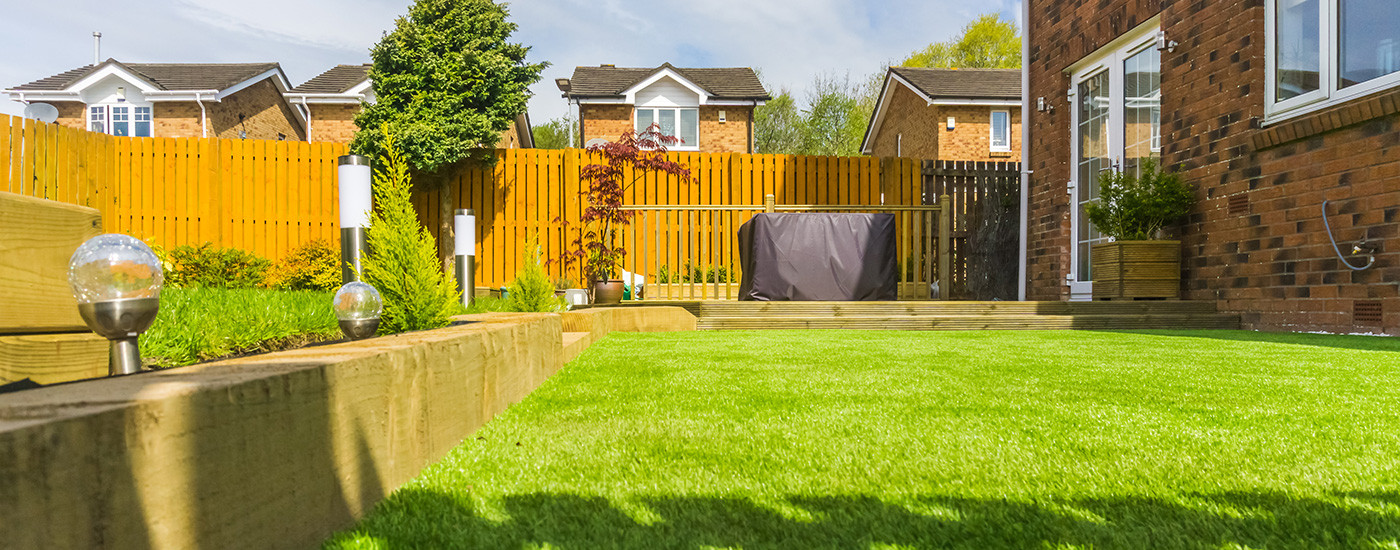What is a garden sleeper?
Originally, garden sleepers were in fact railway sleepers, or crossties. Often made from hardwoods such as oak, railway sleepers were used in the early days of the railway to support the rails and distribute the weight of the carriages. The choice of hardwoods was perfect as they were strong enough to weight bear and extremely durable.
Railway sleepers in the garden
Over time, wooden railway sleepers were replaced with concrete sleepers and rather than leave the timber to rot, people began to use them in landscaping, for retaining walls, garden steps and much more. Authentic railway sleepers would have been treated with creosote, a derivative of coal tar, that was used as a wood preservative. Today, the use of creosote by retail customers is banned and it has been withdrawn from sale.
Modern garden sleepers
Today’s wooden garden sleepers can be softwood or hardwood; softwood sleepers will have been pressure treated or tanalised to preserve them. The difference between pressure treatment and creosote is important in today’s environmentally aware world and at Witham Timber, all our softwood garden sleepers are pressure treated.
What is tanalisation?
Tanalisation is the process that is carried out under pressure (hence 'pressure treated’) to infuse softwood timber with a preservative, Tanalith E. The preservative protects the timber against rot, decay and insect infestation and can prolong the life of a sleeper – an untreated softwood sleeper can last for 5 years, while a pressure treated sleeper can last up to 20 years.
Softwood or hardwood garden sleepers
Softwood and hardwood is determined by their tree of origin. Softwood derives from coniferous trees such as pine and cedar, while hardwood comes from deciduous trees such as oak. There are other differences between hardwood and softwood, including their aesthetic and their carbon footprint. Please note that where you use softwood sleepers any exposed surfaces that are created as a result of sawing the sleeper will need to be treated with a preservative such as Protek’s Wood Preserver.
Uses for garden sleepers
Garden sleepers can be used in a selection of ways when landscaping, from creating raised beds to building retaining walls. What to use garden sleepers for is restricted by your imagination only, but always handle them with gloves, to avoid splinters, and be aware that they can become slippery when wet if using them to create a path or walkway. To give any structure greater stability, it is recommended to use joist screws to reinforce joints and give added strength.
Garden sleepers from Witham Timber
At Witham Timber, we supply hardwood garden sleepers manufactured from quality oak timber. These heavy weight sleepers (around 42kg each) are perfect for creating eye-catching garden features. Our softwood brown sleepers and softwood green sleepers are pressure treated against rot and fungal decay and are the perfect solution for anyone wanting to create raised beds or border edging. Oak sleepers are available in one size only, while softwood sleepers are offered in a choice of sizes.
If you would like further information about any aspect of our wooden garden sleepers, please send us an email to sales@withamtimber.co.uk or give our friendly team a call on 01205 359188

